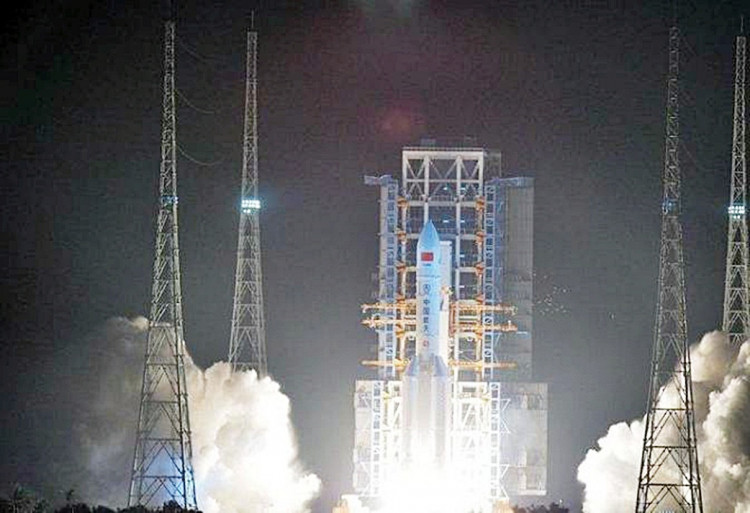Chinese rocket booster remnants that crashed back to Earth on Saturday over the Indian Ocean have been confirmed by U.S. and Chinese space experts.
Over the weekend, a Long March 5B rocket's 25-ton (22.5 metric tons) core stage returned to Earth's atmosphere over the Indian Ocean, ending its brief but contentious orbital stay.
The U.S. Space Command said on Twitter on Saturday that it is still unknown what course the rocket debris may take and pointed inquiries to the Chinese authorities. According to a brief statement that a US official questioned, China's aerospace agency stated wreckage of the 23 metric tons (25.4 tons) Long March 5B hit Earth over the sea in the southwest Philippines. The "great majority" of the debris burned up upon reentry.
On July 24, the Long March 5B launched, carrying a new module to China's under-construction Tiangong space station. Unlike most rocket core stages, which are steered to safe disposal shortly after launch or softly land for future reuse, the Long March 5B reached orbit with its payload. And it stayed up - as a large, fast-moving piece of space junk - until atmospheric drag brought it down in an uncontrollable and unpredictable manner.
This end-of-life scenario is included in the Long March 5B's design, much to the dismay of proponents of exploration and the majority of the larger spaceflight community. Mission managers made no mistakes in this regard. Given that the large rocket doesn't totally burn up upon reentry, critics charge that this disposal approach is risky.
Indeed, specialists from The Aerospace Corporation's Center for Orbital Reentry and Debris Studies have calculated that 5.5 to 9.9 tons (5 to 9 metric tons) of the Long March 5B are probably still alive today.
Given where the Long March 5B reentered, it's also plausible that falling rocket fragments today resulted in some injuries or structural damage. One observer, for instance, appears to have captured the rocket's explosion from Kuching in the Malaysian state of Sarawak and shared a stunning video of it on Twitter.
According to Chinese space officials, the rocket body reentered the atmosphere around 119.0 degrees east longitude and 9.1 degrees north latitude. That spot is above an open body of water, right off the Philippines in Palawan Island.
To find out exactly where the rocket debris landed, we'll need to wait a while. However, experts warn that the disaster itself does not speak highly of China and its spaceflight program.





